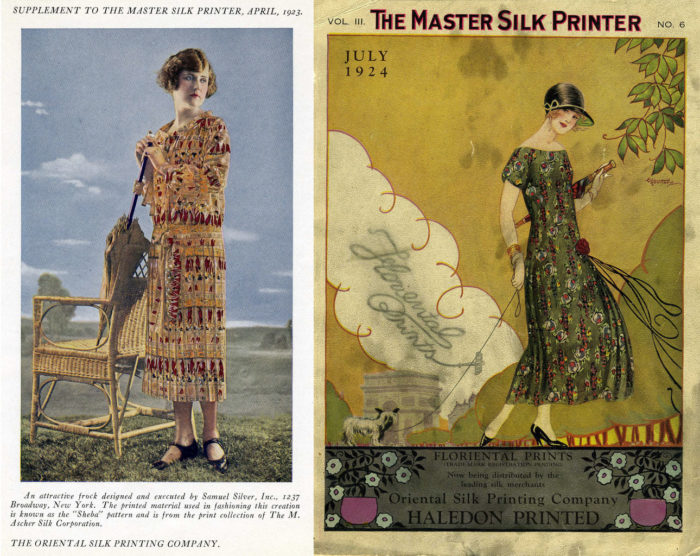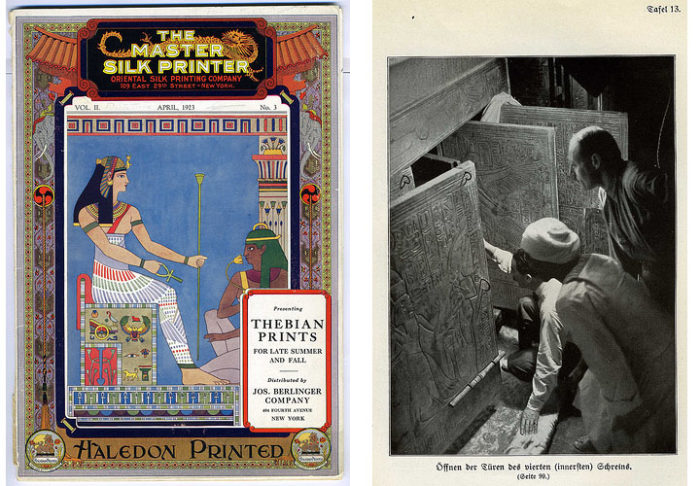
This historical publication is related to objects and themes in the exhibition The Jazz Age: American Style in the 1920s, now on view through August 20, 2017.
Cooper-Hewitt National Design Museum Library collects issues of the The Master Silk Printer, the trade magazine of the Oriental Silk Printing Company, published 1922–1927. It was self-promotional but also served as a vehicle within the fashion industry for providing information related to silk apparel for women. The Paterson-Haledon area of New Jersey was the main center of the silk textile manufacturing industry in the United States during the late nineteenth and early twentieth centuries. Most of these factories had showrooms in New York City in what is still known as ‘The Garment District,’ and many advertised through this trade publication. Companies selling other fashion industry goods such as dyes, machinery, chemicals, ribbon, and related products also advertised here.
The Master Silk Printer, self proclaimed as “a journal devoted to silk uplift,” and “a journal devoted to printed silk,” published on the fifteenth day of each month for a target audience of “Buyers of Broad Silks and Ribbons, Buyers of Silk Costumes; Cutting-Up establishments, Leading Dressmakers, to the Middlemen; to the Upholstery Trade; to the Manufacturers and Converters; to the Distributing Market Houses, to the Commercial Associations, and to Clubs.”
A typical issue consisted of several editorial features, general and timely topics of interest specific to the silk trade, fashion trends abroad, new print patterns, and fashion forecasting. The April 1923 issue cover presented the new “Thebian prints,” a new line of Egyptian-themed printed fabrics for the upcoming season—following the “Egyptomania” craze that developed following the opening of King Tut’s tomb the previous year.[1]

Left: April 1923 issue of The Master Silk Printer. Right: The discovery of King Tut’s tomb.
Industry-related governmental regulations, patent information, corporate personnel news, and industry exhibitions were reported. In the buyers’ guide small paragraphs about topics such as “Polka Dot Phases”, “Magpie Prints” (black and white patterns), or “Handkerchief Squares” were interspersed with longer feature articles or supplements. Black and white photographs, color illustrations, line drawings, ornament vignettes, and cartoons made this an attractive and informative publication that is of historical interest today.
[1] Pattern books of Egyptian ornament became available that designers could reference in creating their own stylized designs for the graphic arts, textiles, and furnishings. The discovery of King Tut’s tomb continued to influence international design and culture throughout the 1920s, and well into the Art Deco period of the 1930s. The treasures of Tutankhamen’s tomb are among the most traveled artifacts in the world.
Elizabeth Broman is Reference Librarian at Cooper Hewitt, Smithsonian Design Library.